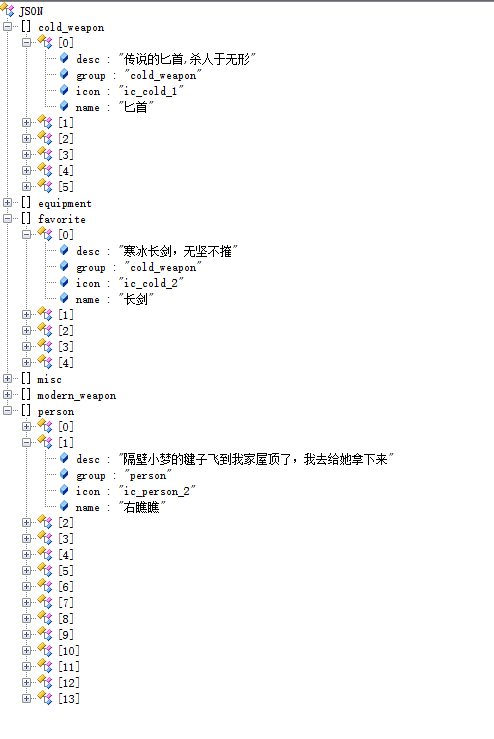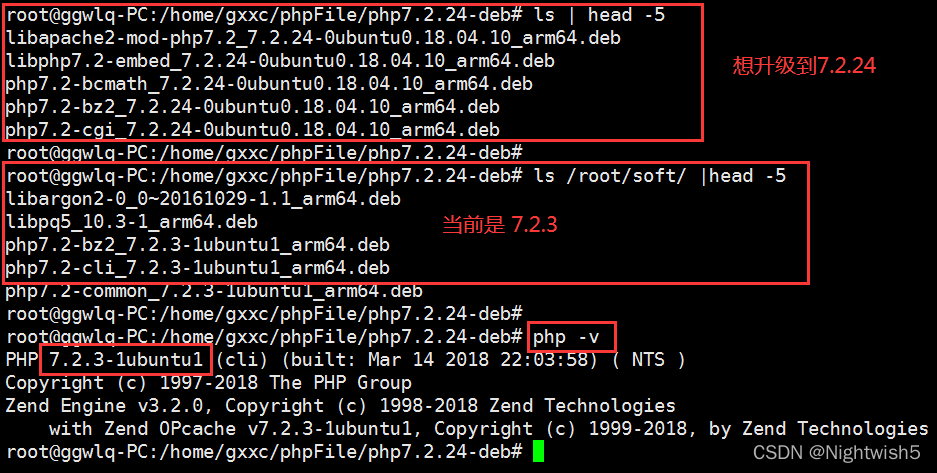当前位置:网站首页>Introduction to the use of countdownlatch and cyclicbarrier for inter thread control
Introduction to the use of countdownlatch and cyclicbarrier for inter thread control
2022-04-23 14:15:00 【pureluckyfish】
One 、CountDownLatch Introduce
CountDownLatch class ( Count by subtraction ); Is a thread synchronization helper class and CyclicBarrier class ( Counting by addition ) The function is similar to , Allow one or more threads to wait , Until a set of operations performed in other threads is complete .
Two 、CountDownLatch Two application scenarios :
Scene one : All threads are waiting for the start signal startSignal.await(), The main flow sends a start signal to inform , Both implementation startSignal.countDown() After the method , All threads begin to execute ; Each thread sends a completion signal after execution , Both implementation doneSignal.countDown() Method ; When all threads are executed , The main process can continue to execute .
package ThreadStudy;
import java.util.concurrent.CountDownLatch;
public class Driver1 {
public static void main(String[] args) throws InterruptedException {
int N = 5;
CountDownLatch startSignal = new CountDownLatch(1);
CountDownLatch doneSignal = new CountDownLatch(N);
for (int i = 0; i < N; i++) {
new Thread(new Work1(startSignal, doneSignal)).start();
}
// At this point, all threads are in a waiting state
System.out.println("doSomethingElse()");
// Let all threads execute
startSignal.countDown();
// Wait for all threads to finish executing
doneSignal.await();
System.out.println("doSomethingElse()");
}
}
class Work1 implements Runnable {
private final CountDownLatch startSignal;
private final CountDownLatch doneSignal;
public Work1(CountDownLatch startSignal,CountDownLatch doneSignal) {
this.startSignal=startSignal;
this.doneSignal= doneSignal;
}
@Override
public void run() {
try {
startSignal.await();
doWork();
doneSignal.countDown();
} catch (InterruptedException e) {
e.printStackTrace();
}
}
void doWork() {
System.out.println("doWork()");
}
}Scene two : Divide a big problem into N Parts of , Each part corresponds to a thread, which is put into the thread pool to execute , When the execution of each thread is completed, a completion signal is sent , Both call doneSignal.countDown() Method ; When all threads are executed , The main process can continue to execute .
package ThreadStudy;
import java.util.concurrent.CountDownLatch;
import java.util.concurrent.ExecutorService;
import java.util.concurrent.Executors;
public class Driver2 {
public static void main(String[] args) throws Exception {
int N = 5;
CountDownLatch doneSignal = new CountDownLatch(N);
// Define thread pool
ExecutorService exec = Executors.newSingleThreadExecutor();
for (int i = 0; i < N; i++) {
exec.execute(new Work2(doneSignal, i));
}
// Wait for all threads to complete
doneSignal.await();
System.out.println("doSomethingElse()");
// Close thread pool
exec.shutdown();
}
}
class Work2 implements Runnable {
private CountDownLatch doneSignal;
private int i;
public Work2(CountDownLatch doneSignal, int i) {
this.doneSignal = doneSignal;
this.i = i;
}
@Override
public void run() {
doWork(i);
doneSignal.countDown();
}
void doWork(int i) {
System.out.println("doWork():" + i);
}
}3、 ... and 、CountDownLatch And CyclicBarrier contrast
| CountDownLatch | CyclicBarrier | |
| The same thing | Are synchronization helper classes | |
| Difference | Subtraction counting , One time use | Add count , It can be recycled |
| Construction method | CountDownLatch(int count) |
CyclicBarrier(int parties) |
| CyclicBarrier(int parties, Runnable barrierAction) | ||
| Common method | await() | await() |
| await(long timeout, TimeUnit unit) | await(long timeout, TimeUnit unit) | |
| countDown() | getNumberWaiting() | |
| getCount() | getParties() | |
| toString() | isBroken() | |
| reset() | ||
Four 、CountDownLatch Class
package ThreadStudy;
import java.util.concurrent.CountDownLatch;
import java.util.concurrent.TimeUnit;
public class Csdn {
public static void main(String[] args) throws Exception {
int countLatch = 3;
// Create a specified number of latches
CountDownLatch countDownLatch = new CountDownLatch(countLatch);
System.out.println("toString Method 0:" + countDownLatch.toString());
for (int i = 0; i < countLatch; i++) {
new Thread(new Runnable() {
@Override
public void run() {
try {
// Reduce the number of latches by one
Thread.sleep(3000);
countDownLatch.countDown();
} catch (InterruptedException e) {
e.printStackTrace();
}
}
}).start();
}
// Get the number of latches
long n = countDownLatch.getCount();
System.out.println(" Number of latches :" + n);
// Specify the timeout for waiting
countDownLatch.await(1, TimeUnit.SECONDS);
System.out.println(" After the timeout, the program continues to execute ");
// The current thread is waiting , Until the number of latches is 0, The program goes down
countDownLatch.await();
System.out.println("toString Method 1:" + countDownLatch.toString());
}
}5、 ... and 、CyclicBarrier Class
package ThreadStudy;
import java.util.concurrent.CyclicBarrier;
import java.util.concurrent.TimeUnit;
public class CyclicBarrierTest {
public static void main(String[] args) {
// Construction method 1 : Create a thread for 3 Circulation barrier of ,3 After all threads reach the obstacle point , Just go down !
CyclicBarrier cb1 = new CyclicBarrier(3);
// Construction method 2 : Create a new CyclicBarrier, When the last thread passes through the obstacle point, it will trigger the thread execution here
CyclicBarrier cb = new CyclicBarrier(3, new Runnable() {
@Override
public void run() {
System.out.println("== The thread that triggers execution after passing the obstacle point ==");
}
});
// Returns the number of people currently waiting at the barrier . This method is mainly used for debugging and asserting
int a = cb.getNumberWaiting();
System.out.println(" Returns the number of people currently waiting at the barrier " + a);
// Return the number of people needed to cross the barrier
int b = cb.getParties();
System.out.println(" Return the number of people needed to cross the barrier :" + b);
// Check whether the barrier is in an interrupted state :
boolean bo = cb.isBroken();
System.out.println(" Check whether the barrier is in an interrupted state :" + bo);
for (int i = 0; i < 4; i++) {
new Thread(new Runnable() {
@Override
public void run() {
System.out.println(" Threads :" + Thread.currentThread().getName() + " Enter the obstacle point and wait ");
try {
// wait for , Until all parties have invoked... On this barrier await.
int d = cb.await();
System.out.println("d:" + d);
// wait for , Until all parties have invoked... On this barrier await, Or the specified waiting time has passed
int c = cb.await(1, TimeUnit.SECONDS);
System.out.println("c:" + c);
} catch (Exception e) {
e.printStackTrace();
}
System.out.println(" Through obstacles ");
}
}).start();
}
// Reset operation , At this point, the thread waiting at the obstacle point will throw BrokenBarrierException abnormal
cb.reset();
}
}版权声明
本文为[pureluckyfish]所创,转载请带上原文链接,感谢
https://yzsam.com/2022/04/202204231406486003.html
边栏推荐
- 线程间控制之CountDownLatch和CyclicBarrier使用介绍
- Recyclerview advanced use (I) - simple implementation of sideslip deletion
- 统信UOS卸载php7.2.24,安装php7.4.27 ;卸载再安装为PHP 7.2.34
- 关于训练过程中损失函数出现断崖式增长的问题
- 利用json-server在本地创建服务器请求
- ie8 浏览器提示是否 阻止访问js脚本
- Win10 comes with groove music, which can't play cue and ape files. It's a curvilinear way to save the country. It creates its own aimpack plug-in package, and aimp installs DSP plug-in
- 在MAC上安装mysql
- 拨开云雾synchronized使用五种方式介绍
- 处理 mkdir:无法创建目录“aaa“:只读文件系统
猜你喜欢
随机推荐
rsync+inotify远程同步
json date时间日期格式化
文字组合,不重复,做搜索或查询关键字匹配
squid代理
1到100号的灯开关问题
xx项目架构随记
MySQL数据库讲解(九)
连接公司跳板机取别名
什么是云迁移?云迁移的四种模式分别是?
政务云迁移实践 北明数科使用HyperMotion云迁移产品为某政府单位实施上云迁移项目,15天内完成近百套主机迁移
Request module
拨开云雾synchronized使用五种方式介绍
RecyclerView细节研究-RecyclerView点击错位问题的探讨与修复
Gartner预测云迁移规模大幅增长;云迁移的优势是什么?
KVM学习资源
关于NodeJS中JSON5的相关配置和使用
How to do a project easily
jsp学习1
Recyclerview advanced use (I) - simple implementation of sideslip deletion
星界边境Starbound创意工坊订阅的mod的存放路径









